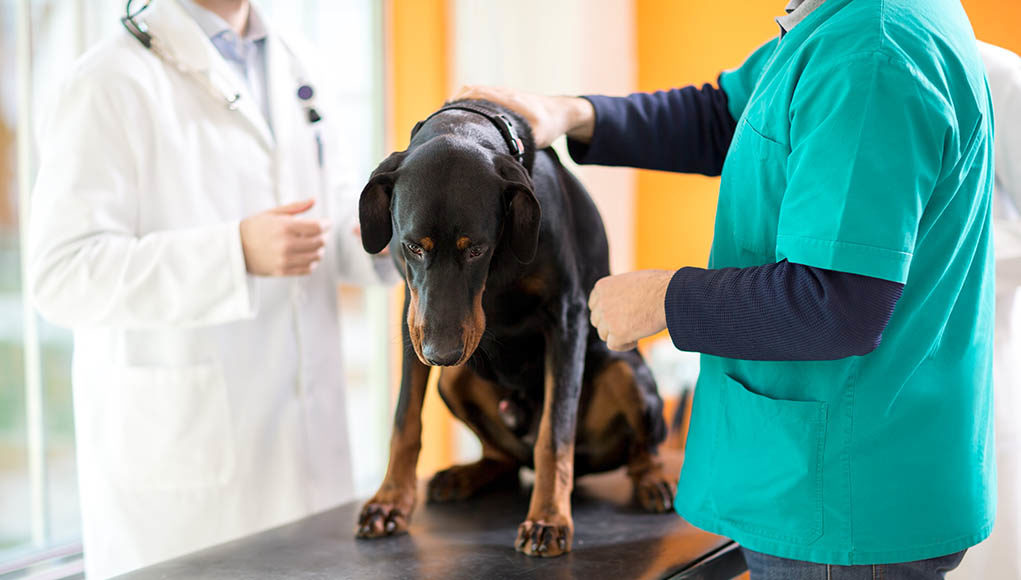Table of Contents
Have you noticed your dog has been feeling unwell lately? Careful. There are lots of diseases that may not show early symptoms and may worsen their condition rapidly. One of them is Carcinoid Cancer in Dogs.
If you’re suspecting that you’re dog has been feeling unwell and may show some of the symptoms below, hurry and have them checked immediately.
There are several cancers in humans. Sadly dogs are not exempted. Neuroendocrine cancer is one of them. But what is a neuroendocrine cell?
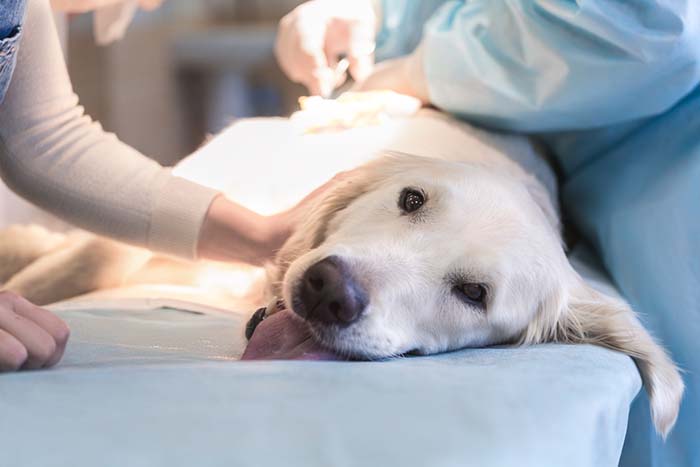
Carcinoid Cancer in Dogs: But First, What is a Neuroendocrine Cell?
Neuroendocrine cells are responsible for transmitting and receiving electrical and chemical signals throughout the nervous system.
They are also responsible for regulating blood circulation and airflow, maintaining heart rate and blood pressure, releasing digestive enzymes, managing muscle growth and bone development, and regulating movement in the gastrointestinal tract.
Neuroendocrine cells are found all over the body, and almost all major organs include neuroendocrine cells. These cells release chemicals like serotonin, gastrin, insulin, and epinephrine.
Most of the neuroendocrine cells are found in the gastrointestinal tract.
They can be located in the esophagus, stomach, intestine, appendix, colon, rectum, thyroid gland, gallbladder, pancreas, lungs, bronchi, kidney, liver, cervix, ovaries, prostate and so much more.
Unfortunately, there is a rare instance where the neuroendocrine cells malfunction and may produce more than the needed amount of chemicals in an area or an organ. Thus, this can form a tumor.
There are multiple types of neuroendocrine tumors. Here, we'll be discussing Carcinoid Cancer in Dogs.
What is Carcinoid Cancer in Dogs
Carcinoid cancer in dogs is the abnormal growth of neuroendocrine tumors in the linings of an organ. Carcinoid cancer is often found in the gastrointestinal tract.
These tumors produce abnormal amounts of hormones, histamine, serotonin, bradykinin, and tachykinins.
Carcinoid cancer in dogs is best treated when addressed early. This type of cancer is the rarest to be diagnosed among other cancers found in dogs.
It can be chronic or aggressive as it can grow either slowly in years or rapidly in a short amount of time. Carcinoid cancer is often found in middle-aged dogs to senior dogs.
Carcinoid cancer may be difficult to address in its early stages as they don’t show any symptoms at first. It also often develops in areas most tumors have a high percentage of metastasizing.
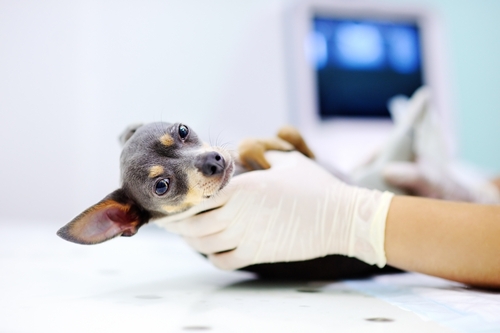
Symptoms
Symptoms of Carcinoid Cancer often depend on its location, organs affiliated, size and span. Carcinoid tumors are found in the gastrointestinal tract.
The common areas carcinoid tumors develop are:
- Colon
- Oesophagus
- Gallbladder
- Intestine
- Liver
- Stomach
Similar to Gastrinoma, Carcinoid Tumours grow in these areas but both cancers are different from one another.
Properly diagnosing these cancers can be done through diagnostics and consultation with the veterinarian.
Here are some clinical symptoms dogs may have:
- Enlarged lymph nodes
- Chronic Vomiting
- Lethargy
- Loss of Appetite
- Weight Loss – Anorexia
- Constipation
- Heart Problems
If owners notice any unusual behavior in their dogs, owners should immediately have their dog consulted and tested for further comprehension of the dog’s condition.
Carcinoid tumors may grow in large mass obstructing the gastrointestinal tract. Treatment prognosis may depend on its status and if it has metastasized or not.
Causes
Alike other cancers in canines, Carcinoid Cancer causes remain unknown. Researchers and doctors are still observing cases to determine the definite causes.
Similar cases may conclude that there are possible causes of Carcinoid Cancer—from genetically inherited cancers, chemically unbalanced hormones, a mutation in genes, prolonged exposure to radiation, and other underlying diseases.
Diagnosis of Carcinoid Cancer in Dogs
When it comes to diagnosing carcinoid cancer in dogs, things can get a little tricky because some of the standard blood and urine tests can show normal results.
Fortunately, there are numerous ways to diagnose carcinoid tumors.
For instance, the vet can choose to perform tests such as urinalysis, complete blood work, biochemical tests, ultrasound or another type of imaging process, and electron microscopy.
These tests can help the vet determine the proper diagnosis of cancer.
Also, these tests can give the exact location of the tumor. Not only that, but it can also show if cancer has spread or metastasized.
If you’re wondering why all of these are important is because this can allow the vet to decide the best treatment options that are available.
Unfortunately, there are limited options for the treatment of Carcinoid Cancer in dogs.
All in all, the vet will perform a series of tests to determine if the dog has cancer, but the best way to differentiate a type of cancer from carcinoids is through a biopsy of a sample of the tissue from the affected area.
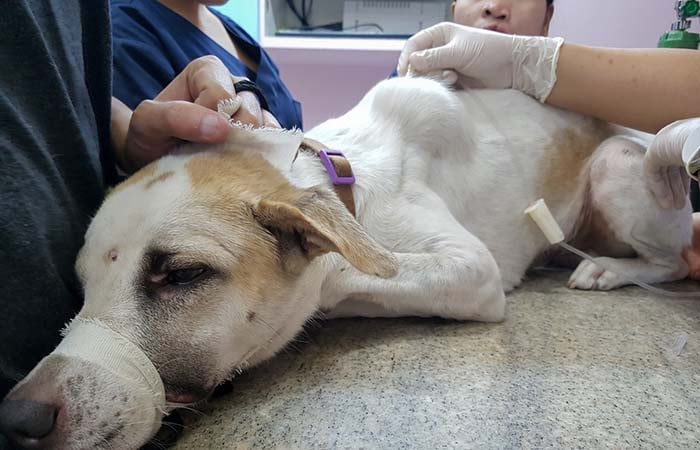
Treatment of Carcinoid Cancer in Dogs
Alike with the causes, treatment is still unfeasible. Although surgery can be an option for owners, it is still possible for the tumor to regrow. Unfortunately, there is still no cure for cancer.
However, when it comes to treating carcinoid cancer in dogs, the only option is complete surgical removal.
Removal of the tumor can help the dog’s wellness again and can also give your dog more time to enjoy its life.
Chemotherapy may also help, not in the tumor, but rather in the affected organs or areas where it has spread. Carcinoid tumors do not respond well to chemotherapy but it helps the affected areas instead.
This may also help in recovery and prolong the dog’s life. However, it is not a definite treatment and recovery.
Don’t lose hope as research is still ongoing on the effective treatment options for Carcinoid cancer in dogs.
If your dog is suffering from carcinoid tumors, their treatment varies. It will all depend on the size of the tumor.
It also varies if it has already spread on the dog’s body and the aggressiveness of cancer.
Carcinoid Cancer in Dogs: Frequently Asked Questions
Is Carcinoid Cancer in dogs painful?
Unfortunately, yes. Since the tumor may occur in major organs, it may obstruct function and regulation causing discomfort and pain for the dog.
Carcinoid tumors are often found along the gastrointestinal tract. For example, if the tumor grows in areas like the rectum, the dog may find it difficult to defecate.
How treatable is Carcinoid Cancer?
There is no definite treatment for Carcinoid Cancer but early detection and early removal may promote a longer life for the dog.
Carcinoid tumors tend to regrow and metastasize, so owners need to have their dogs have a regular follow-up consultation after the treatment.
What is the most common dog cancer?
I know it's upsetting that our furry best friends can also get cancer. Dogs can develop a lot of the same cancers as humans and with similar symptoms too.
Also, when it comes to cancer in dogs, just like with us humans, early diagnosis is the key.
On the other hand, here are a few of the most common cancers in dogs:
- Lymphosarcoma
- Mast Cell Tumor
- Melanoma
- Bone Cancer
- Fibrosarcoma
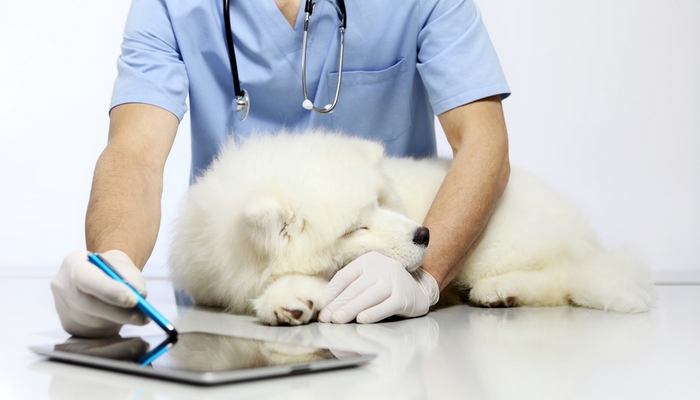
Carcinoid Cancer in Dogs Summary
Owners should watch for any symptoms in their dogs that may be a sign of cancer or any health complications.
Still, some dog diseases like carcinoid cancer in dogs could just appear in ways you didn't expect.
It’s important to have their dog's health in top shape or at least have diseases addressed immediately.
The prognosis of Carcinoid Cancer may also depend on the stage, treatment, and the dog’s response to the treatment. Owners need to follow through with the advised treatment or medication given and be encouraged.
Sadly, there are cases of Carcinoid Cancer in dogs that have been diagnosed late. In this stage, treatment may be infeasible.
Veterinarians may help owners discern options for treatment or euthanization to cease the agony the dog is experiencing.


